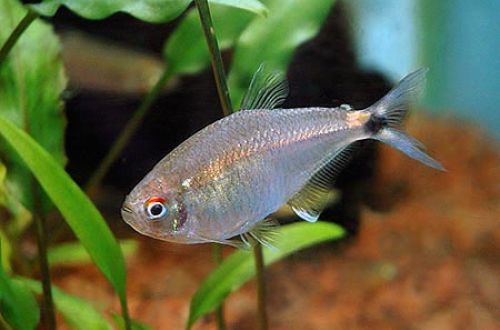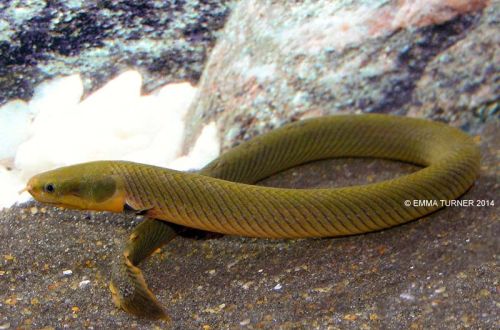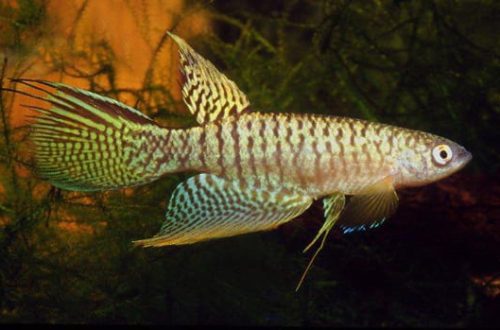
Astyanax point-to-point
Astyanax bimaculatus, scientific name Astyanax bimaculatus, belongs to the Characins family. It is easy to keep and breed, perfectly compatible with other types of fish, but despite this it is not popular in the aquarium hobby, which is largely due to its inexpressive monochromatic color.

Contents
Habitat
Comes from Central and South America. The natural habitat extends from Panama to Argentina and includes various biotopes. Fish are found in fast, slowly flowing streams and rivers, swamps, lakes and other bodies of water.
Brief information:
- The volume of the aquarium – from 200 liters.
- Temperature – 20-28°C
- Value pH — 5.5–7.5
- Water hardness – 2–21 dGH
- Substrate type – any
- Lighting – subdued, moderate
- Brackish water – no
- Water movement – moderate
- The size of the fish is 10–15 cm.
- Food – any food
- Temperament – peaceful
- Keeping in a group of 8-10 individuals
Description
Adult individuals reach a length of 10–15 cm. Sexual dimorphism is weakly expressed, there are no obvious visible differences between males and females. The fish are silver in color with translucent fins. The body pattern consists of a single dark stroke at the base of the tail, accompanied by two whitish speckles.
Food
An omnivorous species, it will accept various foods intended for aquarium fish. The daily diet may consist of dry food in the form of flakes, pellets, combined with live or frozen artemia, daphnia, bloodworms, etc.
Maintenance and care, arrangement of the aquarium
The optimal size of an aquarium for a flock of 8-10 fish starts at 200 liters. Given the wide natural distribution area, Astyanax two-spot will feel comfortable in a variety of environments – in conditions of a dense planting of aquatic plants, and in a half-empty tank. In decoration, it is desirable to use plants with hard leaves from among Anubias, water mosses, ferns or artificial analogues, tender varieties are likely to be damaged or eaten.
With long-term maintenance, it is important to ensure stable water conditions in the acceptable range of hydrochemical values and temperatures, and it is also impossible to allow the accumulation of nitrogen cycle products (ammonia, nitrites, nitrates) to dangerous concentrations. In many ways, these tasks are solved by installing a productive filtration system along with weekly replacements of part of the water with fresh water and regular removal of organic waste (feed residues, excrement).
Behavior and Compatibility
Astyanax two-pointed is peacefully disposed towards other fish. However, high mobility may be overkill for slow and too small species. As neighbors in the aquarium, it is worth choosing from among other active fish of comparable size. They prefer to be in a flock of 8-10 individuals.
Breeding / breeding
Successful breeding of this species in a home aquarium is not uncommon. In certain cases, the stimulus for spawning is the supply of feed with a high protein content. With the onset of the breeding season, some of the fish are noticeably rounded – these are females filled with caviar. Spawning occurs near the bottom among thickets of plants (if any), or directly on the ground. Parental instincts are not developed, so adult fish, on occasion, will definitely feast on their own caviar and fry.
In order to save the brood, you can use one of two methods. The first – females ready for spawning (rounded) and several males are transferred to a separate tank. The ratio should be 2:1. When the eggs are laid and fertilized, the fish are moved back. The second – already laid eggs are removed from the main aquarium. It is worth noting that one female is capable of carrying up to 1000 eggs, so the second method may seem rather time consuming.
The fry appear after 24 hours, after another 12 hours they begin to swim freely in search of food. Feed with specialized powdered feed.
Fish diseases
Diseases inherent in this particular species of fish were not noted. When kept in suitable conditions (high water quality, balanced diet, non-conflict neighbors, etc.), health problems are not observed. The most common cause of disease is the deterioration of conditions leading to immune suppression, which makes the fish susceptible to infections that are invariably present in the surrounding area. When the first signs of an illness are detected (lethargy, exhaustion, refusal of food, lowered fins, etc.), it is necessary to immediately check the main parameters of the water. Often, the restoration of acceptable living conditions contributes to self-healing, but if the fish is too weak or has received obvious damage, medical treatment will be required. For more information on symptoms and treatments, see the Aquarium Fish Diseases section.





